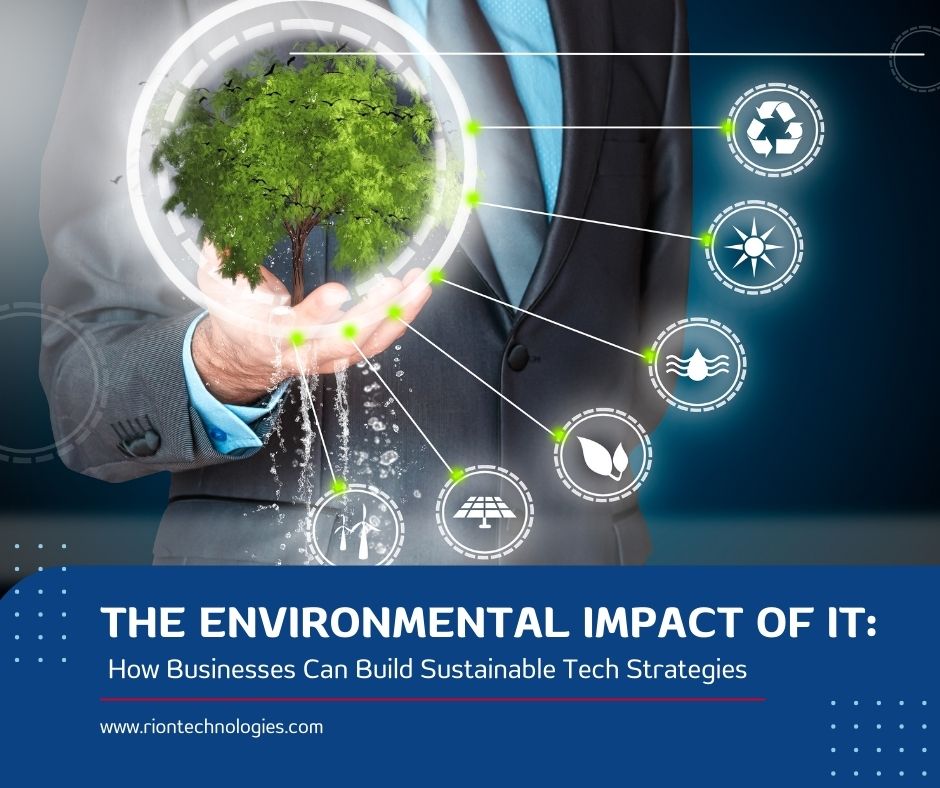
As businesses continue to embrace digital transformation, the environmental impact of IT infrastructure is becoming a growing concern. From energy consumption in data centers to the disposal of outdated hardware, the technology that powers modern business operations often leaves a significant carbon footprint. With climate change and sustainability becoming central global issues, it is crucial for businesses to adopt eco-friendly IT practices that minimize their environmental impact. One approach is to invest in energy-efficient hardware and renewable energy sources to power IT operations, thereby reducing greenhouse gas emissions. Additionally, implementing circular economy practices, such as refurbishing and recycling old equipment, can extend the lifecycle of technology and reduce electronic waste. As tech predictions for business IT highlight a shift toward greener solutions, companies must prioritize sustainable innovation to align with environmental goals and meet the expectations of increasingly eco-conscious stakeholders.
Why Sustainable IT Matters
- Rising Energy Consumption
IT operations require a substantial amount of energy, particularly when it comes to running data centers and powering office equipment. According to recent studies, data centers are responsible for approximately 1% of global electricity use, and this number is expected to rise as businesses increasingly rely on cloud services, AI, and big data. As energy consumption grows, so does the carbon footprint associated with IT infrastructure.
- Electronic Waste (E-Waste)
The rapid advancement of technology often leads to frequent hardware upgrades and replacements, which contributes to the growing problem of electronic waste (e-waste). Old servers, computers, and other devices are often discarded improperly, leading to hazardous materials being released into the environment. E-waste is one of the fastest-growing waste streams globally, and its environmental impact is profound.
- Corporate Responsibility and Brand Reputation
Consumers are more environmentally conscious than ever before, and businesses are under increasing pressure to operate sustainably. Companies that actively work to reduce their environmental impact can strengthen their brand reputation, attract eco-conscious customers, and enhance their corporate social responsibility (CSR) profile. Sustainability is not only good for the planet but also for business.
How Businesses Can Adopt Greener IT Strategies
- Energy-Efficient Data Centers
Data centers are at the heart of most business IT operations, and making them more energy-efficient can significantly reduce a company’s carbon footprint. Businesses can partner with green data centers that use renewable energy sources, such as wind or solar power, to reduce their reliance on non-renewable resources. Additionally, implementing energy-saving technologies like cooling optimization and server virtualization can lead to further reductions in power consumption.
- Cloud Computing
Cloud computing is not only a flexible and scalable solution for businesses, but it can also be more energy-efficient. By moving operations to the cloud, companies can reduce the need for physical servers and hardware, which helps lower energy consumption. Cloud service providers are increasingly adopting renewable energy sources and designing their infrastructure to minimize environmental impact, making cloud adoption a greener option for businesses.
- Sustainable Hardware Practices
Businesses can reduce e-waste by adopting sustainable hardware practices, such as extending the lifecycle of IT equipment, recycling old devices, and choosing eco-friendly vendors. Some hardware manufacturers now offer recycling programs or build products with recycled materials, which helps reduce waste. Companies can also explore options like leasing hardware rather than purchasing new equipment, ensuring that outdated technology is returned and repurposed.
- Virtual Meetings and Remote Work
Reducing the need for physical office space and commuting can also have a positive environmental impact. By encouraging remote work and utilizing virtual meeting technologies, businesses can cut down on travel-related emissions and reduce their office energy consumption. This shift toward remote and hybrid work models can be a key component of a company’s sustainability efforts.
- Implementing Green IT Policies
Adopting internal policies that promote green IT practices is another effective strategy for reducing a business’s environmental footprint. This can include setting guidelines for energy usage, optimizing device settings for power efficiency, and training employees on sustainable IT practices.
Conclusion
As businesses strive to become more environmentally responsible, integrating sustainable IT strategies into their operations is essential. By optimizing energy use, reducing e-waste, and leveraging technologies like cloud computing and virtualization, companies can significantly lower their carbon footprint. Rion Technologies is committed to helping businesses develop eco-friendly IT solutions that support both growth and sustainability, ensuring that technological advancement doesn’t come at the expense of the environment.
